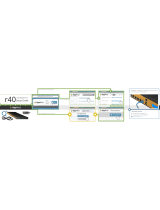
CONTENTS
About this User Guide .............................................................................................................................................. 1
Chapter 1 Introduction ...................................................................................................................................... 2
Chapter 2 Network Topology .......................................................................................................................... 3
Chapter 3 Management Mode ........................................................................................................................ 4
3.1 Standalone Mode ............................................................................................................................ 4
3.2 Managed Mode ................................................................................................................................ 4
3.3 Switch to Standalone Mode ........................................................................................................ 4
Chapter 4 Network .............................................................................................................................................. 5
Chapter 5 Wireless ............................................................................................................................................... 6
5.1 Wireless Settings.............................................................................................................................. 7
5.1.1 Wireless Basic Settings......................................................................................................... 8
5.1.2 SSIDs ........................................................................................................................................... 9
5.1.3 Wireless Advanced Settings ........................................................................................... 13
5.1.4 Load Balance ........................................................................................................................ 14
5.2 Portal ................................................................................................................................................. 14
5.2.1 Portal Configuration .......................................................................................................... 15
5.2.2 Free Authentication Policy .............................................................................................. 20
5.3 MAC Filtering ................................................................................................................................. 22
5.4 Scheduler ........................................................................................................................................ 24
5.5 QoS .................................................................................................................................................... 28
5.5.1 AP EDCA Parameters ......................................................................................................... 29
5.5.2 Station EDCA Parameters ................................................................................................ 31
5.6 Rogue AP Detection .................................................................................................................... 32
5.6.1 Settings .................................................................................................................................. 33
5.6.2 Detected Rogue AP List.................................................................................................... 34
5.6.3 Trusted AP List ..................................................................................................................... 34
5.6.4 Download/Backup Trusted AP List ............................................................................... 35
Chapter 6 Monitoring ...................................................................................................................................... 37
6.1 AP ....................................................................................................................................................... 37
6.1.1 AP List ..................................................................................................................................... 37
6.2 SSID.................................................................................................................................................... 42






















